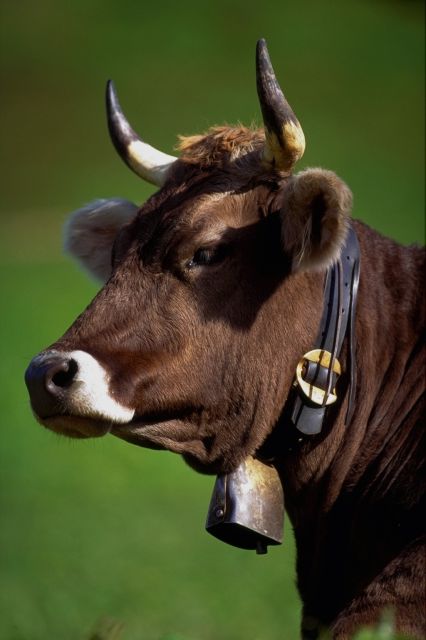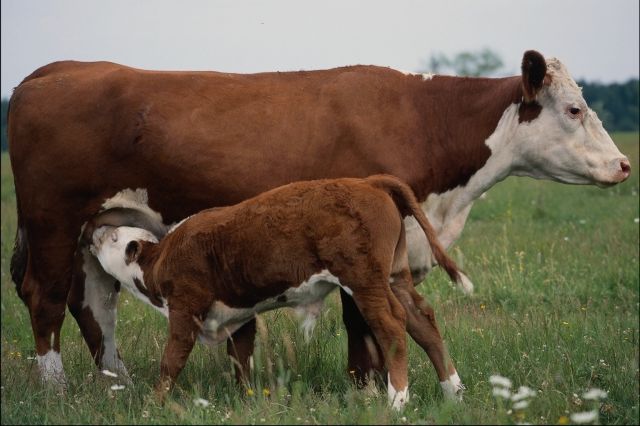
Say no to BEEF. 10 things the beef industry does not want you to know 1. We don’t need beef. The industry wants you to believe it is essential but it is not. Their motive for such propaganda is of course money. 2. Milk from cow is unnatural and does more harm than good. The industry wants us to believe that “milk does a body good.” Scientific research has shown that consumption of cow milk in toddlers contributes to osteoporosis later in life.1,2 It is also a GI irritant causing constipation in children,38 and diarhea for people with lactose intolerance.24,25 3. There is no humane way of killing a gentle social animal like cows. Hence “beef” is a euphemism; a sugar coating over the fact that all beef are cow carcasses. So it is an ethical issue; would you kill your own cow and eat its meat? 4. Beef consumption as part of the mainstream western diet has contributed to the rise of cardiovascular problems. It is a fact that beef fat and cholesterol cause atherosclerosis and build up of plaques in the blood vessels.12 One cannot avoid eating beef without the fat. 5. Causes prostate, breast and ovarian cancers.15,16,17,18,19,20,21,22,23. Synthetic hormones in beef causes mastitis which may lead to breast cancer.27,28 And colon cancer for many people who are beef lovers are addicted to this diet and do not consume enough soluble or insoluble fibers; the so-called high roughage diet to clean out the intestines. 6. Beef consumption causes world hunger. The feed produced to feed cows for consumption could be used to feed people. Its basic math. 7. Beef farming destroys the environment. Rainforests are cleared for cattle ranching. Methane gas produced from cow are released into the atmosphere contributing to greenhouse gasses (which includes carbon dioxide) 8. Prions. People get madcow disease from eating cow—infected cow. Fact of the matter is you cannot get it from eating plants.You get prions from nervous tissue. You cannot avoid not eating it because nervous tissue is found even in lean muscle. 9. A 2001 finnish study of 3000infants with genetically increased risk of developing insulin dependant diabetes showed increased susceptibilty of aquiring insulin dependent diabetes after early introduction of cow's milk. Cow milk protein has been linked to diabetes.29,30 10. From ethical standpoint for anyone who justifies eating cow it would be hypocritical to say it is breaking taboo for people who consume dog, cat, or monkey meat. Evolve! Stop the slaughter! Say no to Beef! References 1. Lanou AJ, Berkow SE, Barnard ND. Calcium, dairy products, and bone health in children and young adults: a reevaluation of the evidence. Pediatrics. 2005;115(3):736-43. 2. Feskanich D, Willett WC, Colditz GA. Calcium, vitamin D, milk consumption, and hip fractures: a prospective study among postmenopausal women. Am J Clin Nutr. 2003;77(2):504-11. 3. Lunt M, Masaryk P, Scheidt-Nave C, et al. The Effects of Lifestyle, Dietary Dairy Intake and Diabetes on Bone Density and Vertebral Deformity Prevalence: The EVOS Study. Osteoporos Int. 2001;12:688-698. 4. Prince R, Devine A, Dick I, et al. The effects of calcium supplementation (milk powder or tablets) and exercise on bone mineral density in postmenopausal women. J Bone Miner Res. 1995;10:1068-75. 5. Lloyd T, Beck TJ, Lin HM, et al. Modifiable determinants of bone status in young women. Bone. 2002;30(2):416-21. 6. Finn SC. The skeleton crew: is calcium enough? J Women’s Health. 1998;7(1):31-6. 7. Nordin CBE. Calcium and osteoporosis. Nutrition. 1997;3(7/8):664-86. 8. Reid DM, New SA. Nutritional influences on bone mass. Proceed Nutr Soc. 1997;56:977-87. 9. Lin P, Ginty F, Appel L, et al. The DASH diet and sodium reduction improve markers of bone turnover and calcium metabolism in adults. J Nutr. 2001;133:3130–3136. 10. Tucker KL, Hannan MR, Chen H, Cupples LA, Wilson PWF, Kiel DP. Potassium, magnesium, and fruit and vegetable intakes are associated with greater bone mineral density in elderly men and women. Am J Clin Nutr. 1999;69:727-36. 11. Going S, Lohman T, Houtkooper L, et al. Effects of exercise on bone mineral density in calcium-replete postmenopausal women with and without hormone replacement therapy, Osteoporos Int. 2003;14(8):637-43. 12. Warensjo E, Jansson JH, Berglund L, et al. Estimated intake of milk fat is negatively associated with cardiovascular risk factors and does not increase the risk of a first acute myocardial infarction. Br J Nutr. 2004;91:635-42. 13. Szeto YT, Kwok TC, Benzie IF. Effects of a long-term vegetarian diet on biomarkers of antioxidants status and cardiovascular disease risk. Nutrition. 2004;20:863-6. 14. Ornish D, Brown SE, Scherwitz LW, et al. Can lifestyle changes reverse coronary heart disease? Lancet. 1990;336:129-33. 15. Voskuil DW, Vrieling A, van’t Veer LJ, Kampman E, Rookus MA. The insulin-like growth factor system in cancer prevention: potential of dietary intervention strategies. Cancer Epidemiol Biomarkers Prev. 2005;14:195-203. 16. Cadogan J, Eastell R, Jones N, Barker ME. Milk intake and bone mineral acquisition in adolescent girls: randomised, controlled intervention trial. BMJ. 1997;315:1255-60. 17. Cohen P. Serum insulin-like growth factor-I levels and prostate cancer risk—interpreting the evidence. J Natl Cancer Inst. 1998;90:876-9. 18. Chan JM, Stampfer MJ, Giovannucci E, et al. Plasma insulin-like growth factor-1 and prostate cancer risk: a prospective study. Science. 1998;279:563-5. 19. Chan JM, Stampfer MJ, Ma J, Gann PH, Gaziano JM, Giovannucci E. Dairy products, calcium, and prostate cancer risk in the Physicians' Health Study. Am J Clin Nutr. 2001;74:549-54. 20. Tseng M, Breslow RA, Graubard BI, Ziegler RG. Dairy, calcium and vitamin D intakes and prostate cancer risk in the National Health and Nutrition Examination Epidemiologic Follow-up Study cohort. Am J Clin Nutr. 2005;81:1147-54. 21. Cramer DW, Greenberg ER, Titus-Ernstoff L, et al. A case-control study of galactose consumption and metabolism in relation to ovarian cancer. Cancer Epidemiol Biomarkers Prev. 2000;9:95-101. 22. Larsson SC, Bergkvist L, Wolk A. Milk and lactose intakes and ovarian cancer risk in the Swedish Mammography Cohort. Am J Clin Nutr. 2004;80:1353-7. 23. Kushi LH, Mink PJ, Folsom AR, et al. Prospective study of diet and ovarian cancer. Am J Epidemiol. 1999;149:21-31. 24. Bertron P, Barnard ND, Mills M. Racial bias in federal nutrition policy, part I: the public health implications of variations in lactase persistence. J Natl Med Assoc. 1999;91:151-7. 25. Swallow DM. Genetics of lactase persistence and lactose intolerance. Annu Rev Genet. 2003;37:197-219. 26. Holick M. The vitamin D epidemic and its health consequences. J Nutr. 2005;135:2739S-48S. 27. Outwater JL, Nicholson A, Barnard N. Dairy products and breast cancer: the IGF-1, estrogen, and bGH hypothesis. Med Hypothesis. 1997;48:453-61. 28. Baars AJ, Bakker MI, Baumann RA, et al. Dioxins, dioxin-like PCBs and non-dioxin-like PCBs in foodstuffs: occurrence and dietary intake in the Netherlands. Toxicol Lett. 2004;151:51-61. 29. Saukkonen T, Virtanen SM, Karppinen M, et al. Significance of cow’s milk protein antibodies as risk factor for childhood IDDM: interaction with dietary cow’s milk intake and HLA-DQB1 genotype. Childhood Dibetes in Finland Study Group. Dibetologia. 1998;41:72-8. 30. Kimpimaki T, Erkkola M, Korhonen S, et al. Short-term exclusive breastfeeding predisposes young children with increased genetic risk of Type I diabetes to progressive beta-cell autoimmunity. Diabetologia. 2001;44:63–69. 31. Gartner LM, Morton J, Lawrence RA, et al; American Academy of Pediatrics Section on Breastfeeding. Breastfeeding and the use of human milk. Pediatrics. 2005;115(2):496-506. 32. Pennington JAT, Douglass JS. Bowes and Church’s Food Values of Portions Commonly Used. 18th ed. Baltimore, Md: Lippincott Williams & Wilkins; 2005. 33. Lucassen PL, Assendelft WJ, van Eijk JT, Gubbels JW, Douwes AC, van Geldrop WJ. Systematic review of the occurrence of infantile colic in the community. Arch Dis Child. 2001;84:398–403. 34. Jarvinen KM, Makinen-Kiljunen S, Suomalainen H. Cow’s milk challenge through human milk evoked immune responses in infants with cow’s milk allergy. J Pediatr. 1999;135:506-12. 35. Paronen J, Bjorksten B, Hattevig G, Akerblom HK, Vaarala O. Effect of maternal diet during lactation on development of bovine insulin-binding antibodies in children at risk for allergy. J Allergy Clin Immunol. 2000;106:302-306. 36. Sampson HA. Food allergy. Part 1: immunopathogenesis and clinical disorders. J Allergy Clin Immunol. 2004;113:805–819. 37. Host A. Frequency of cow’s milk allergy in childhood. Ann Allergy Asthma Immunol. 2002;89(6 Suppl 1):33-7. 38. Iacono G, Cavataio F, Montalto G, et al. Intolerance of cow’s milk and chronic constipation in children. N Engl J Med. 1998;339(16):1100-4. 

|